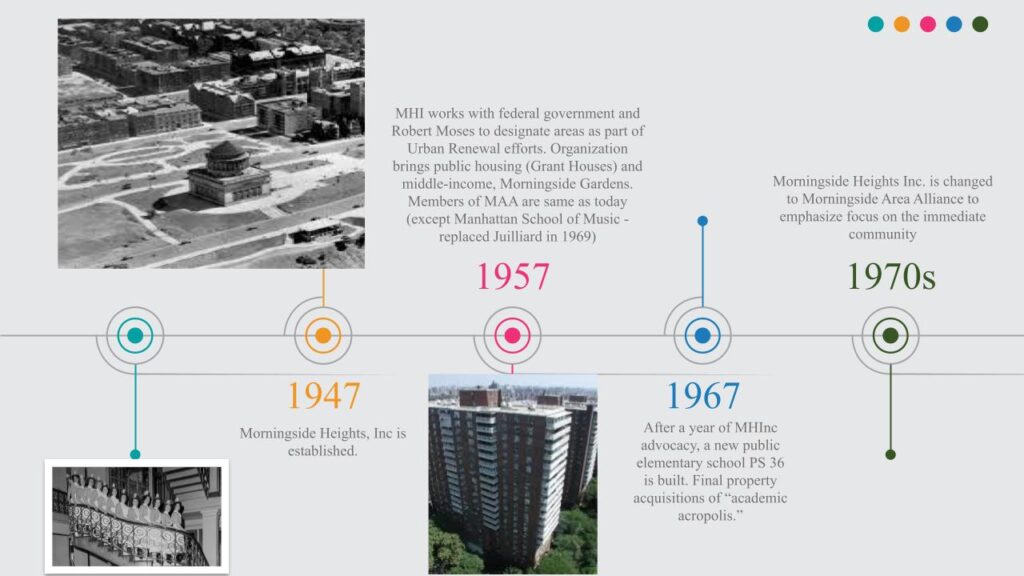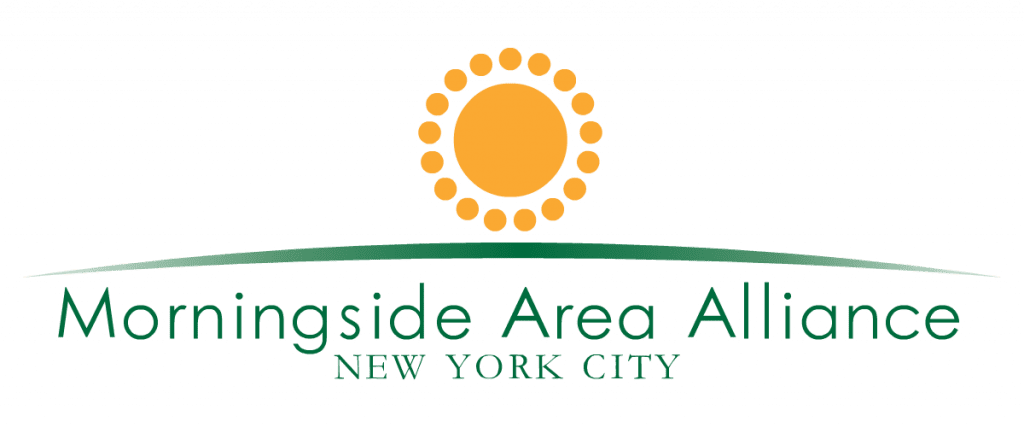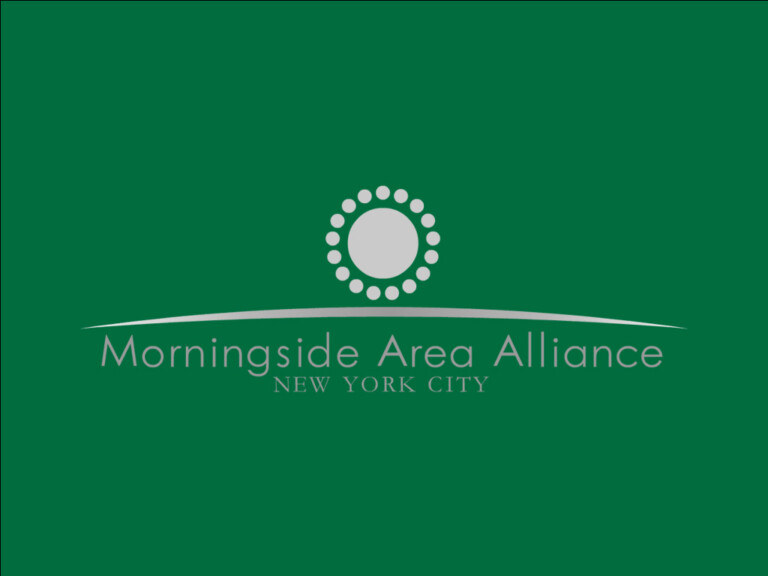Columbia University Rare Book and Manuscript Library houses a large collection of organizational documents.
http://www.columbia.edu/cu/lweb/archival/collections/ldpd_4412857/
Morningside Area Alliance was founded as Morningside Heights Inc. in 1947, out of the recommendations of two Columbia University-instituted committees—acting University President Frank D. Fackenthal’s Morningside Heights Development Committee, and the University’s extant Committee on Research in Urban Land Use and Housing. Together the committees concluded that any work toward development, redevelopment, and institutional expansion in Morningside Heights would be wasted without collaboration across all institutions in the area. After initial meetings of institutional representatives from the fourteen institutions involved (Columbia University, St. Luke’s Hospital, Cathedral Church of St. John the Divine, Teacher’s College, Barnard College, Corpus Christi Church, Home for Old Men and Aged Couples, International House, Jewish Theological Seminary, Juilliard School of Music, St. Hilda’s and St. Hugh’s School, The Riverside Church, Union Theological Seminary, and the Women’s Hospital of St. Luke’s Center) during which the name of Morningside Heights Inc. was agreed upon, Lawrence Orton, a member of the New York City Planning Commission, was appointed Directing Consultant, later to become Executive Director, and David Rockefeller was appointed president of the Executive Committee. The organization began by focusing on information gathering, mapping, and planning as a way to carry out the stated goal of “[promoting] the improvement of Morningside Heights as an attractive, residential, educational, and cultural area.” The original certificate of incorporation further defines the methods, stating that the organization will strive to collect, study and disseminate information, research and data affecting the improvement, redevelopment, and advancement of the area; to appear before official bodies to accomplish these purposes; to increase cooperation between real estate and mortgage holders for the improvement of the district; to acquire property, provided it is necessary for these purposes; to further or cause activities which will in any manner further the intent and purposes given above. By the end of 1948 Morningside Heights Inc. made the decision to work towards neighborhood improvements by focusing on developing public housing and improving public schools. In addition the organization’s housing-improvement mission, it was decided that Morningside Heights Inc. would act as a “clearing house” for all real estate purchases and transactions by the sponsoring institutions. To aid in this task, the stock corporation Remedco was founded in 1949 to act as the real estate arm of Morningside Heights Inc. Given the task of acting “as vehicle for any business activity…undertaken jointly” by the supporting institutions, Remedco was operated by a small executive committee made up of experienced real estate businessmen who could move more quickly and effectively than could the Board of Morningside Heights Inc. to complete real estate transactions. Remedco became instrumental in organizational efforts to rid the neighborhood of single room occupancy buildings, including the Bryn Mawr which was purchased and cleared of tenants in 1964 by Remedco before being sold to Barnard College for institutional use. During its existence, Remedco acted on a number of buildings in this manner. The efforts of Morningside Heights Inc. in the area of public housing were made vastly more effective by the passage of the Federal Housing Act of 1949. The Morningside-Manhattanville neighborhood was selected as a redevelopment area by the Mayor’s Committee on Slum Clearance in 1950, and as part of the redevelopment process Morningside Heights Inc. was authorized to compile and present a long report on redevelopment of the neighborhood. The Morningside Housing Corporation–the company created to build the Morningside Gardens Housing Development under Title I–was founded within Morningside Heights Inc. in 1952, but immediately became an independent entity sharing executive membership with the organization. Morningside Gardens was opened in 1958. The design, demolition, and construction were carried out by the Morningside Housing Corporation, while Morningside Heights Inc. assisted in financing the project through Remedco and contributed to design and public relations through their persistent mission of information-gathering and distribution. The organization’s work with redevelopment and renewal projects was again stimulated in 1960 when the city applied for a federal planning grant from the Housing and Home Finance Agency to create a General Neighborhood Renewal Plan (GNRP) for the area bounded by 100th and 125th streets and 8th Ave and the Hudson River, and to fund construction and the other costs of carrying out the plan. As part of this area, Morningside Heights Inc. was in a position to offer assistance to the GNRP effort. Assistance included preparing a public relations plan to stimulate interest in the project and offering secretarial and other services to the bodies created by the GNRP–mainly the Morningside Renewal Council. The Council, which was created by the City Housing and Redevelopment Board to advise it during the GNRP project, was composed of representatives from different institutions and community groups with a stake in the project, including Morningside Heights Inc. Ultimately the GNRP would lead to some conflict between the City and Morningside Heights Inc. due to the limitations of institutional expansion under the plan, which some institutions, and especially Columbia University, deemed unconstitutional. During the existence of the Morningside Renewal Council, and especially during the tense periods in the late 1960s and early 1970s there would be an air of conflict in the Council proceedings and the interactions between Morningside Heights Inc, the bodies of the City, and the citizen and neighborhood groups of the area. The next largest area of Morningside Heights Inc. work was aid to public schools and programs for Morningside youth. The organization funded a music program in PS 125 and PS 165 from 1954-1958, and advocated for years on behalf of the effort to build another elementary school in Morningside Heights. PS 36, which had been proposed at least ten years earlier as PS 62, was eventually built in 1966 on Morningside Drive. The organization’s strong push for a new elementary school was partially based in the findings of the Morningside Manhattanville Redevelopment study, which recommended additional education facilities for the neighborhood where they were currently lacking. Throughout its existence Morningside Heights Inc. worked to revitalize organized extracurricular youth activities in the neighborhood as part of a program intended to minimize the perceived causes of juvenile crime. In 1954 the organization began funding the Cathedral Summer Day Camp at the Cathedral of St. John the Divine and the Morningside Basketball league, which would continue under the Adult Youth Association when it was founded in 1958. The Stone Gym Youth Center was founded for similar purposes–a process which stretched from 1960 to 1962–and was aided by Morningside Heights Inc. but largely operated by the youth themselves. In 1977 the organization—now known as Morningside Area Alliance after a 1972 reorganization and name change recommended by internal committee—began sponsoring the Morningside Summer Streets Program which offered activities and day trips for kids in the neighborhood. Morningside Heights Inc. would continue its work against neighborhood crime on another front through direct action by the committee on Public Safety and the programs that came out of it. In 1961 Morningside Heights Inc. began running a street patrol of hired security guards manning posts and walking beats throughout the neighborhood. The name was changed to the “Community Patrol” in 1969 and the program continued through the mid 2000’s. Throughout the 1970s and the early 1980s, in response to a perceived increase in street crime, the Alliance carried out the “Operation Alliance” initiative which included an increased street presence, flyers and posters aimed at educating the public about crime, and services to escort vulnerable citizens and work directly with “problem” youth. Much of the major work of Morningside Heights Inc./Morningside Area Alliance has been through the reports released to engage with the organization’s planning as well as information-gathering and distribution mission. The organization released a large number of reports, plans, and studies of varying size and length, but some of the larger and most notable are the Morningside Manhattanville Redevelopment Report (1951), the Skidmore, Owings, and Merrill Report on Morningside Heights (1958), the Morningside Heights Core Area Study (1968), and the statistical and economic studies compiled by consultant Chester Rapkin (1951 as part of the Morningside Manhattanville Redevelopment Report, and 1970). The findings of these documents reflect much of the major work carried out by the organization, especially in the earlier part of its existence. The organization has also gone through many changes in membership due to inevitable shifting of institutions to and from the area. Starting with the fourteen original members, Corpus Christi Church withdrew from participation in Morningside Heights Inc. in 1959 and then rejoined in 1961. The Interchurch Center joined in 1960 after moving to Morningside Heights, as did Bank Street College of Education in 1968 and the Manhattan School of Music in 1969. St Hilda’s and St Hugh’s School joined in 1962. The Juilliard School withdrew from Morningside Heights Inc. in 1969 when it moved to the newly-constructed Lincoln Center.

Founding Mission:
To foster, develop and promote the advancement of the Morningside Heights district of New York City as a unique educational, residential and cultural neighborhood; to sustain linkages among its members institutions to enhance communication, public well-being and cooperative initiatives; and to identify and access the collective resources of its member institutions for the purpose of improving the areas of education and youth services, public health and community development in Morningside Heights and the surrounding community.
[pdf-embedder url=”http://morningside-alliance.org/wp-content/uploads/About-Morningside-Area-Alliance.pdf” title=”About Morningside Area Alliance”]

